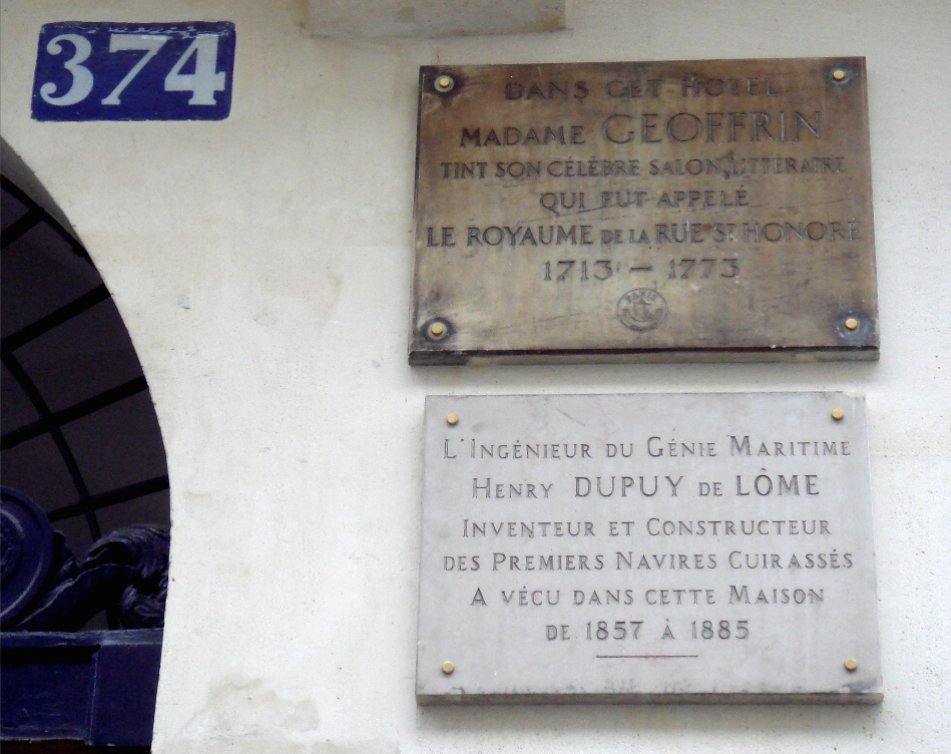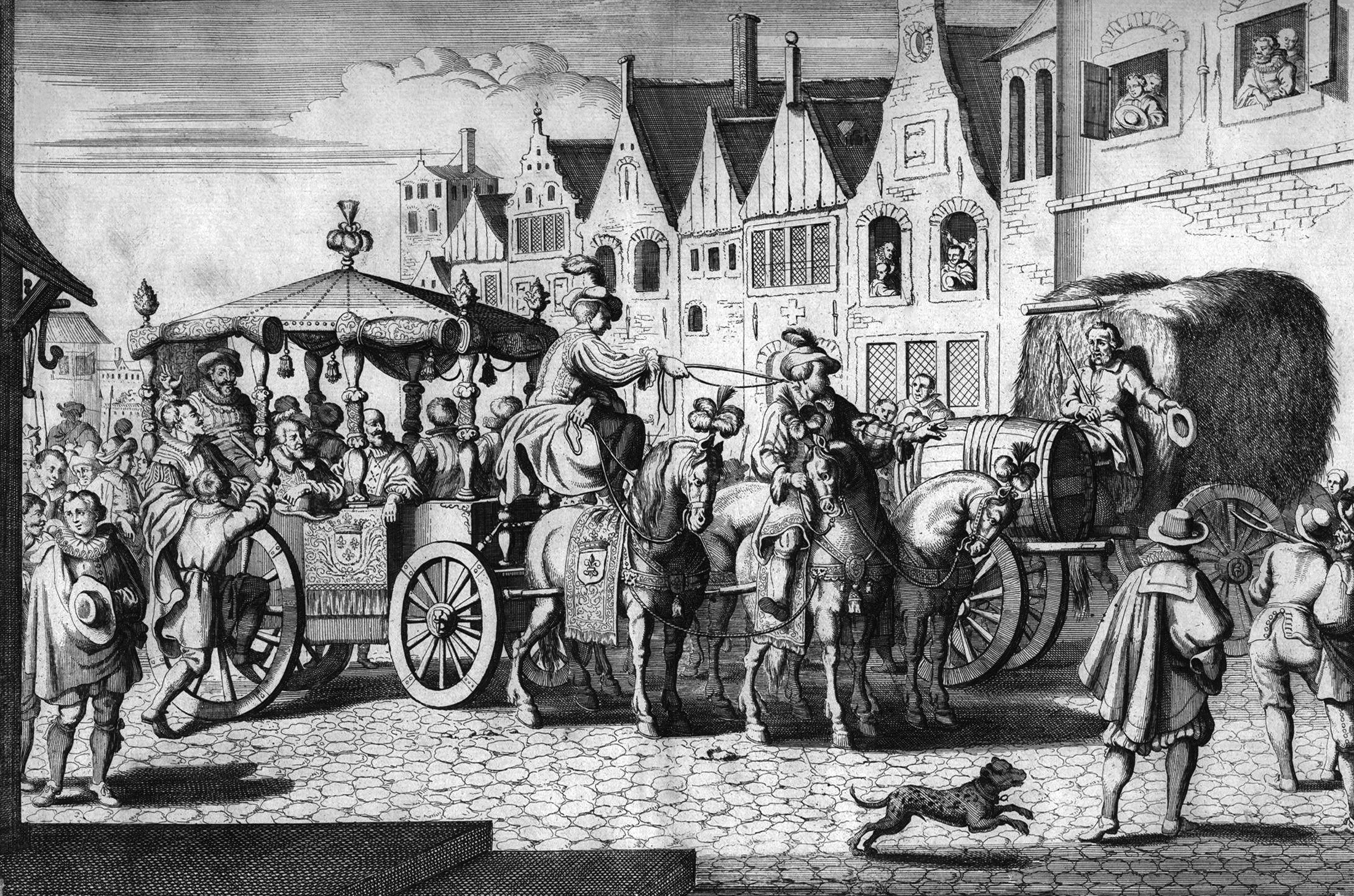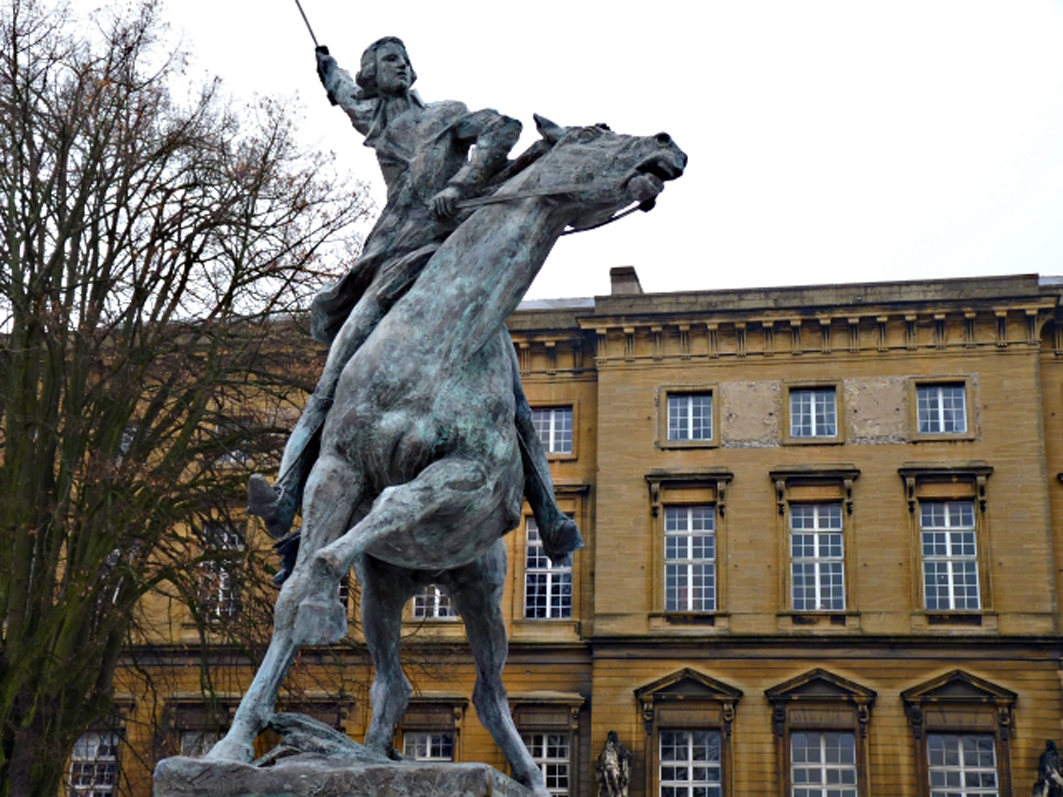|
Rue Saint-Honoré
The Rue Saint-Honoré () is a street in the 1st arrondissement of Paris, France. It is named after the collegial , situated in ancient times within the cloisters of Saint-Honoré. The street, on which are located a number of museums and upscale boutiques, is near the Tuileries Gardens and the Saint-Honoré market. Like many streets in the heart of Paris, the Rue Saint-Honoré, as it is now known, was laid out as early as the Middle Ages or before. The street, at one time, continued beyond the former city walls into what was the ''faubourg'' (from Latin ''foris burgem'', an area "outside the city"). This continuation was eventually named the Rue du Faubourg Saint-Honoré. History The Rue Saint-Honoré has been given the following names in its long history: *The section between the Rue de la Lingerie and the Rue de la Tonnellerie was named the Rue de la Chausseterie from 1300 to the 17th century. *The section between the now extinct Rue Tirechappe and the Rue de l'Arbre Sec was ... [...More Info...] [...Related Items...] OR: [Wikipedia] [Google] [Baidu] [Amazon] |
1st Arrondissement Of Paris
The 1st arrondissement of Paris (''Ier arrondissement'') is one of the 20 Arrondissements of Paris, arrondissements of the capital city of France. In spoken French, this arrondissement is colloquially referred to as ''le premier'' (the first). It is governed locally together with the 2nd arrondissement of Paris, 2nd, 3rd arrondissement of Paris, 3rd and 4th arrondissement of Paris, 4th arrondissement, with which it forms the 1st sector of Paris (Paris Centre, Paris-Centre). Also known as ''Louvre'', the arrondissement is situated principally on the Rive Droite, right bank of the River Seine. It also includes the west end of the Île de la Cité. The locality is one of the oldest areas in Paris, the Île de la Cité having been the heart of the city of Lutetia, conquered by the Ancient Rome, Romans in 52 BC, while some parts on the right bank (including Les Halles) date back to the early Middle Ages. It is the least populated of the city's arrondissements and one of the smallest ... [...More Info...] [...Related Items...] OR: [Wikipedia] [Google] [Baidu] [Amazon] |
François Ravaillac
François Ravaillac (; 1578 – 27 May 1610) was a French Catholic who assassinated King Henry IV of France in 1610. Biography Early life and education Ravaillac was born in 1578 at Angoulême to an educated family; his grandfather François Ravaillac was the prosecutor in Angoulême, and two of his maternal uncles were canons of the Angoulême Cathedral. His father Jean Ravaillac was a violent man whose many misdeeds caused a public scandal and led to legal difficulties, while his mother Françoise Dubreuil was known for her Catholic piety. He first began working as a servant, later becoming a school teacher. Obsessed with religion, he sought admission to the ascetic Feuillants order, but after a short probation, he was dismissed for being "prey to visions." An application in 1606 for admission to the Society of Jesus was also unsuccessful. Regicide In 1609, Ravaillac claimed to have experienced a vision instructing him to convince King Henry IV to convert the Huguenots ... [...More Info...] [...Related Items...] OR: [Wikipedia] [Google] [Baidu] [Amazon] |
Antoine Barnave
Antoine Pierre Joseph Marie Barnave (, 21 September 176129 November 1793) was a French politician, and, together with Honoré Mirabeau, one of the most influential orators of the early part of the French Revolution. He is most notable for correspondence with Marie Antoinette in an attempt to set up a constitutional monarchy and for being one of the founding members of the Feuillants. Early life Antoine Barnave was born on 21 September 1761 in Grenoble (Dauphiné), in a Protestant family. His father was an advocate at the ''Parlement'' of Grenoble, and his mother, Marie-Louise de Pré de Seigle de Presle, was a highly educated aristocrat. Because they were Protestants, Antoine could not attend local schools, as those were run by the Catholic church, and his mother educated him herself. Barnave was prepared for a career in law, and at the age of twenty-two made himself known by a speech pronounced before the local ''Parlement'', the ''Parlement du Dauphiné'', also known as ''Par ... [...More Info...] [...Related Items...] OR: [Wikipedia] [Google] [Baidu] [Amazon] |
Gilbert Du Motier, Marquis De Lafayette
Marie-Joseph Paul Yves Roch Gilbert du Motier de La Fayette, Marquis de La Fayette (; 6 September 1757 – 20 May 1834), known in the United States as Lafayette (), was a French military officer and politician who volunteered to join the Continental Army, led by General George Washington, in the American Revolutionary War. Lafayette was ultimately permitted to command Continental Army troops in the decisive Siege of Yorktown in 1781, the Revolutionary War's final major battle, which secured American independence. After returning to France, Lafayette became a key figure in the French Revolution of 1789 and the July Revolution of 1830 and continues to be celebrated as a hero in both France and the United States. Lafayette was born into a wealthy land-owning family in Chavaniac in the province of Auvergne in south-central France. He followed the family's martial tradition and was commissioned an officer at age 13. He became convinced that the American revolutionary cause was ... [...More Info...] [...Related Items...] OR: [Wikipedia] [Google] [Baidu] [Amazon] |
Couvent Des Feuillants
The royal monastery of Saint-Bernard, better known as the Couvent des Feuillants or Les Feuillants Convent, was a Feuillant nunnery or convent in Paris, behind what is now numbers 229—235 rue Saint-Honoré, near its corner with rue de Castiglione. It was founded in 1587 by Henry III of France. Its church was completed in 1608 and dedicated to Saint Bernard of Clairvaux. The nunnery was secularised and nationalised in the decrees of 13 and 16 May 1790 and became notable as the meeting place of the Feuillant Club. Jacques-Louis David used the nave of the convent's church as a studio for his painting '' The Tennis Court Oath''. Most of the complex was then demolished under the French Consulate, leaving only the guesthouses at 229—235 rue Saint-Honoré (built in 1776 by Jacques Denis Antoine and classed as a historic monument in 1987) and the outline of its church's apse, which can be discerned in the courtyard of one of the guesthouses. History Foundation Between the end ... [...More Info...] [...Related Items...] OR: [Wikipedia] [Google] [Baidu] [Amazon] |
Pierre Cailleteau
Pierre Cailleteau (1655–1724), called Lassurance, was a French architect.Neuman 1996. He is not to be confused with his son Jean Cailleteau, also known as Lassurance, or Lassurance le Jeune to distinguish him from his father. Biography He was noticed by Jules Hardouin-Mansartin 1679 on the work-site of the Château de Clagny. In 1684, he started as a designer in the administration of the Bâtiments du Roi and played a major role in the new decoration of the royal residences. On the testimony of Saint-Simon, Hardouin-Mansart "was ignorant in his trade, and of Robert De Cotte his brother-in-law, it was hardly less. They both took an artist that they held close and secret to themselves, that was Lassurance, without which they could do nothing." Lassurance is attributed to most of the decorative sketches commissioned for the Château de Versailles and the Trianon de Marbre around 1690: the King's apartments in the left wing of Trianon (round parlor, chapel parlor) and the apart ... [...More Info...] [...Related Items...] OR: [Wikipedia] [Google] [Baidu] [Amazon] |
Palais-Royal
The Palais-Royal () is a former French royal palace located on Rue Saint-Honoré in the 1st arrondissement of Paris. The screened entrance court faces the Place du Palais-Royal, opposite the Louvre Palace, Louvre. Originally called the Palais-Cardinal, it was built for Cardinal Richelieu from about 1633 to 1639 by architect Jacques Lemercier. Richelieu bequeathed it to Louis XIII, before Louis XIV gave it to his younger brother, Philippe I, Duke of Orléans. As the succeeding Duke of Orléans, Dukes of Orléans made such extensive alterations over the years, almost nothing remains of Lemercier's original design. The Palais-Royal is now the seat of the Ministry of Culture (France), Ministry of Culture, the Conseil d'État (France), Conseil d'État and the Constitutional Council (France), Constitutional Council. The central Palais-Royal Garden (Jardin du Palais-Royal) serves as a public park; its arcade houses shops. History Palais-Cardinal Originally called the Palais-Cardinal, ... [...More Info...] [...Related Items...] OR: [Wikipedia] [Google] [Baidu] [Amazon] |
Léon Vaudoyer
Léon Vaudoyer (; 7 June 1803 – 9 February 1872) was a French architect. Biography Vaudoyer was born in Paris, the son of architect Antoine Vaudoyer. With his contemporaries Félix Duban, Henri Labrouste, and Louis Duc he became a leading light in architectural circles in the 1830s. He won the Grand Prix de Rome in 1826. In 1838 he won the design competition for the hôtel de ville in Avignon (unrealized), and from 1845 onwards he (with Gabriel-Auguste Ancelet) enlarged the buildings of the Priory of Saint-Martin-des-Champs (now the Conservatoire National des Arts et Métiers). In 1852 he was given responsibility for reconstructing the Sorbonne (unrealized), and also for designing the polychrome Cathédrale Sainte-Marie-Majeure in Marseille Marseille (; ; see #Name, below) is a city in southern France, the Prefectures in France, prefecture of the Departments of France, department of Bouches-du-Rhône and of the Provence-Alpes-Côte d'Azur Regions of France, reg ... [...More Info...] [...Related Items...] OR: [Wikipedia] [Google] [Baidu] [Amazon] |
French Ministry Of Culture
The Ministry of Culture () is the ministry (government department), ministry of the Government of France in charge of List of museums in France, national museums and the . Its goal is to maintain the French identity through the promotion and protection of the arts (visual, plastic, theatrical, musical, dance, architectural, literary, televisual and cinematographic) on national soil and abroad. Its budget is mainly dedicated to the management of the (six national sites and hundred decentralised storage facilities) and the regional (culture centres). Its main office is in the in the 1st arrondissement of Paris on the . It is headed by the Minister of Culture, a cabinet member. The current officeholder has been Rachida Dati since 11 January 2024. History Deriving from the Italian Renaissance, Italian and Duchy of Burgundy, Burgundian courts of the Renaissance, the notion that the state had a key role to play in the sponsoring of artistic production and that the arts were linke ... [...More Info...] [...Related Items...] OR: [Wikipedia] [Google] [Baidu] [Amazon] |
Joan Of Arc
Joan of Arc ( ; ; – 30 May 1431) is a patron saint of France, honored as a defender of the French nation for her role in the siege of Orléans and her insistence on the Coronation of the French monarch, coronation of Charles VII of France during the Hundred Years' War. Claiming to be acting under divine guidance, she became a military leader who transcended gender roles and gained recognition as a savior of France. Joan was born to a propertied peasant family at Domrémy-la-Pucelle, Domrémy in northeast France. In 1428, she requested to be taken to Charles VII, later testifying that she was guided by visions from the archangel Michael, Margaret the Virgin, Saint Margaret, and Catherine of Alexandria, Saint Catherine to help him save France from English domination. Convinced of her devotion and purity, Charles sent Joan, who was about seventeen years old, to the siege of Orléans as part of a relief army. She arrived at the city in April 1429, wielding her banner a ... [...More Info...] [...Related Items...] OR: [Wikipedia] [Google] [Baidu] [Amazon] |
P1260796 Paris Ier Rue St-Honore N161-163 Rwk
P1, P01, P-1 or P.1 may refer to: Computing, robotics, and, telecommunications * DSC-P1, a 2000 Sony Cyber-shot P series camera model * Sony Ericsson P1, a UIQ 3 smartphone * Packet One, the first company to launch WiMAX service in Southeast Asia * Peer 1, an Internet hosting provider * Honda P1, a 1993 Honda P series of robots, an ASIMO predecessor Media * DR P1, a Danish radio network operated by Danmarks Radio * NRK P1, a Norwegian radio network operated by the Norwegian Broadcasting Corporation * SR P1, a Swedish radio network operated by Sveriges Radio * Polonia 1, a Polish TV channel of the Polcast Television Military * P-1 Hawk, a 1923 biplane fighter of the U.S. Army Air Corps * Kawasaki P-1, a Japanese maritime patrol aircraft (previously P-X) * P-1 (missile), a Soviet anti-ship cruise missile Science Biology * P1 antigen, identifies P antigen system * P1 laboratory, biosafety -level-1 laboratory * P1 phage, a bacterial virus * SARS-CoV-2 Gamma variant, a strain o ... [...More Info...] [...Related Items...] OR: [Wikipedia] [Google] [Baidu] [Amazon] |






